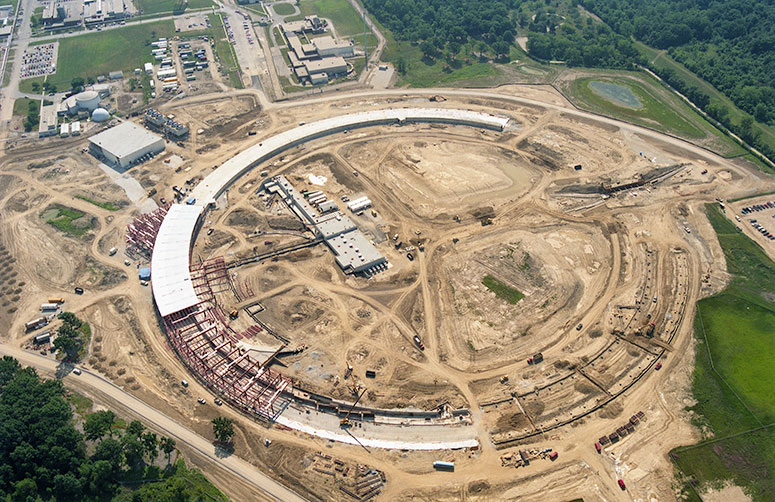
Its roots lie in what is known today as Red Gate Woods but in the early 1940s was Argonne Forest, part of the Cook County Forest Preserve District near Palos Hills, Illinois. Argonne Laboratory was created to provide a more remote location to continue Enrico Fermi’s work on the Manhattan Project after the physicist and his team achieved the first manmade controlled nuclear reaction at the University of Chicago. In the late 1940s Argonne Laboratory relocated to a larger site in Lemont, Illinois, and was chartered by the United States Department of Energy as the nation’s first national laboratory in 1946 to conduct “cooperative research in nucleonics,” exploring the use of nuclear energy in peacetime efforts.
Over the next four decades Argonne National Laboratory achieved recognition for its work by staff researchers and visiting scientists in the fields of high-energy physics, chemistry, and metallurgy. In 1983 Carlo U. Segre, then a new physics faculty member at Illinois Tech, was selected to represent the university on an external committee working to establish a new synchrotron at Argonne.
“I realized there was an opportunity for the university to hire faculty to become involved at the ground floor in building this facility and have equipment available to do cutting-edge research,” he explains. “It takes about 10 years to plan such a project, obtain initial design reports, and secure funding—about a half-billion dollars—from the DOE to begin construction.”
The committee was persuasive and in 1996 Argonne’s high-energy ring of particle accelerators—the Advanced Photon Source (APS)—opened its doors. Producing high-brightness and highly penetrating X-ray beams, the APS allows researchers to examine how molecules and atoms are arranged, learn more about biological proteins, and study chemical processes at nanoscale, for example.
Segre, now professor of physics, Duchossois Leadership Professor, and director of the Center for Synchrotron Radiation Research and Instrumentation, led efforts to build five beamlines at the APS, three of which are still operated by Illinois Tech: BioCAT (Biophysics Collaborative Access Team), headed by Professor Thomas Irving (IIT Magazine http://magazine.iit.edu/summer-2016/titin-titan) and two under MRCAT (Materials Research Collaborative Access Team), which Segre directs. Segre says that today, six to seven Illinois Tech faculty, various staff, and research scientists normally work at the APS.
In an IIT Magazine Video Extra (magazine.iit.edu/media/carlo-u-segre-into-the-research-circle), listen to Segre discuss how students participate in APS science and information on his own areas of research at Argonne.
More Online
Argonne National Laboratory: www.anl.gov
“Building the Advanced Photon Source 1991–1996” (Video Courtesy of Argonne National Laboratory): https://youtu.be/Ruu3gr5zEwQ